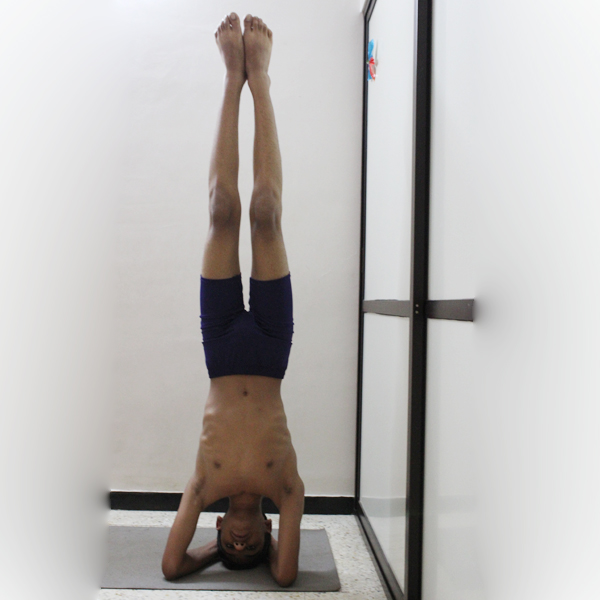Shirshasana
Yoga is for Posers.

Shirshasana {Headstand Pose} Name: – Shirshasana Sanskrit: – ???????? Meaning: – Headstand Pose Pose Type: – Upside down -Steps And Benefits Shirshasana is comes from the Sanskrit word “Shirsha” which means ‘Head’. There are so many variations in Shirshasana, in this we describe Salamba Sirshasana (supported headstand pose) and this is a simple type of Shirshasana among all the variations of Shirshasana. In this the body is totally inverted and held upright bolstered by the lower arms, and the crown of the head lies lightly on the floor. Sirshasana is also known as the ‘king of all Asanas’ due to its various medical advantages, is an inverted stance. Its physiological impacts can be felt in the whole organism, yet all the more particularly at the level of the blood circulation, assimilation and endocrine system. Steps of Shirshasana (Headstand yoga pose) (In the starting stage hold the position for a few moments, day by day increase the duration, if you feel uncomfortable leave the pose as soon as possible). Benefits of Shirshasana There are so many variations in Shirshasana and if you want to perform variations, first you have to master in basic pose of Shirshasana (Salamba Shirshasana).Once you are master in basic then try these variations according to your comfortable level. Variations are given below Salamba Shirshasana 2- Headstand Pose 2. Salamba Sirshasana 3-headstand Pose 3. Ek Pada Sirshasana – Single Leg Headstand. Baddha Hasta Shirshasana- Bound Hands Headstand. Baddha Konasana Sirshasana- Bound Angle Pose Headstand. Parivrttaikapada Shirshasana – Single Leg Revolved Headstand. Mukta Hasta Sirshasana – Free Hands Headstand. Parshva Sirshasana – Side Headstand. Parshvaikapada Sirshasana- Single Leg Headstand. Upavistha Konasana Shirshasana- Seated Angle Pose Headstand. Urdhva Padmasana Sirshasana- Upward Lotus Pose Headstand. NOTE This Asana should be avoided in the case of neck injury, severe headache. During menstruations avoid this. People who are suffering from high B.P. problems, heart problems, brain injury, conjunctivitis, glaucoma, hernia, obesity and hypertension are strictly advised not to perform this Asana. Consult an expert and doctor also before doing any yogic activities.